Introduction
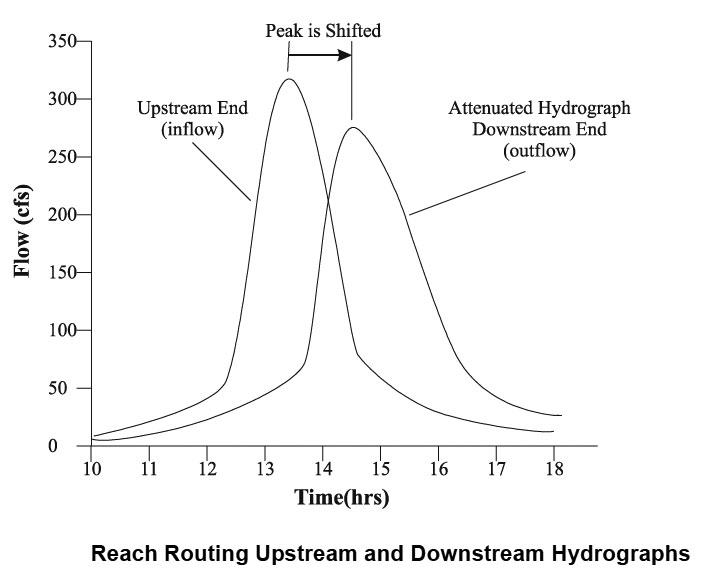
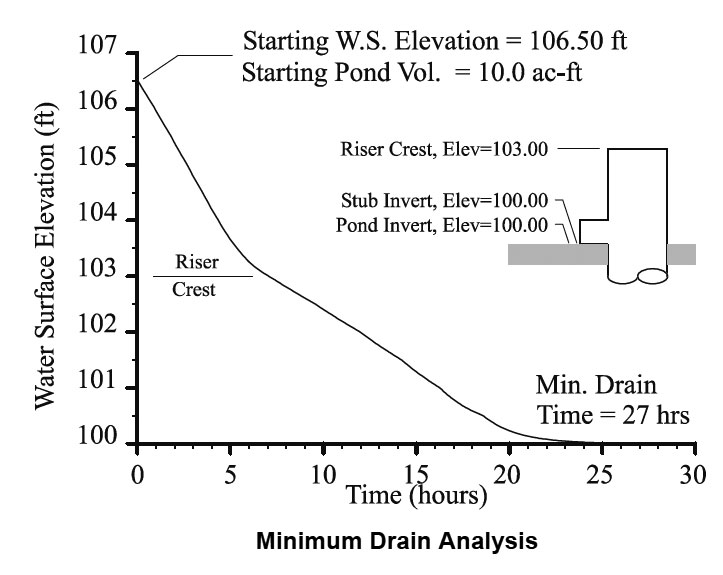
Left: Photo: Robin Stott, license CC-BY-SA-2.0. Center: delayed and reduced peak runoff. Right: Draw down analysis
You know from your work with TR-55 that detention is a stormwater technique where water is stored temporarily then allowed to flow off-site at a predetermined maximum rate. The primary purpose of this method is to protect streams and rivers from increased volume and velocity resulting from the conversion of land from natural character to impervious conditions.
These basins delay the runoff peak to prevent flooding (center image). When properly located and designed they also reduce the peak runoff rate (center image).
In the image (above left), the detention pond is vegetated with turf but the side slope are so steep that the basin has to be fenced to protect the public. The outcome is a landscape eyesore. The sediment in the water indicates that there are inflow problems but that some sediment will settle in the basin requiring periodic maintenance. Enlarge the image to see the outlet and overflow structure. There are a few drain openings in the structure to increase the rate of runoff as the magnitude of the storm increases.
Infiltration is generally not a goal when using a detention basin since it drains quickly. In fact, the image, above right, shows that a draw-down study is sometimes required by stormwater agencies to demonstrate that the basin empties quickly and is, therefore, available for the next storm inflow.
Open Space
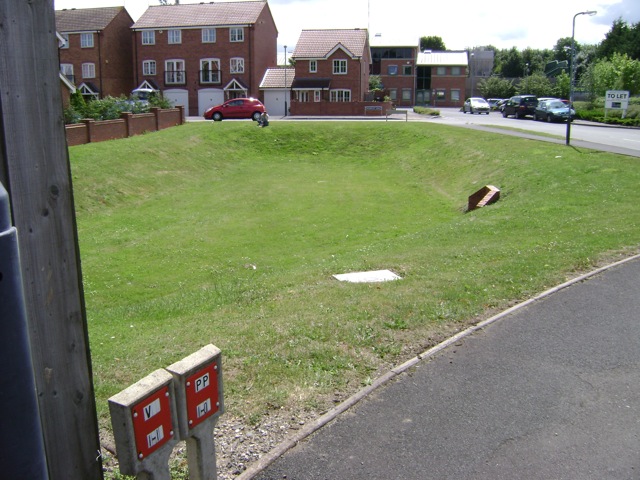
Photo: www.therosscause.com.
In this image the detention pond is somewhat more appealing than the one in the previous image. The side slopes are more gentle (about 4:1). It is planted in turf so it could be used by local residences and does provide open space. From this image you can see why this type of stormwater basin is called a dry pond.
From a water quality perspective detention basins are ineffective. In fact, some parameters, such as pathogenic bacteria, can actually increase.
Natural Vegetation
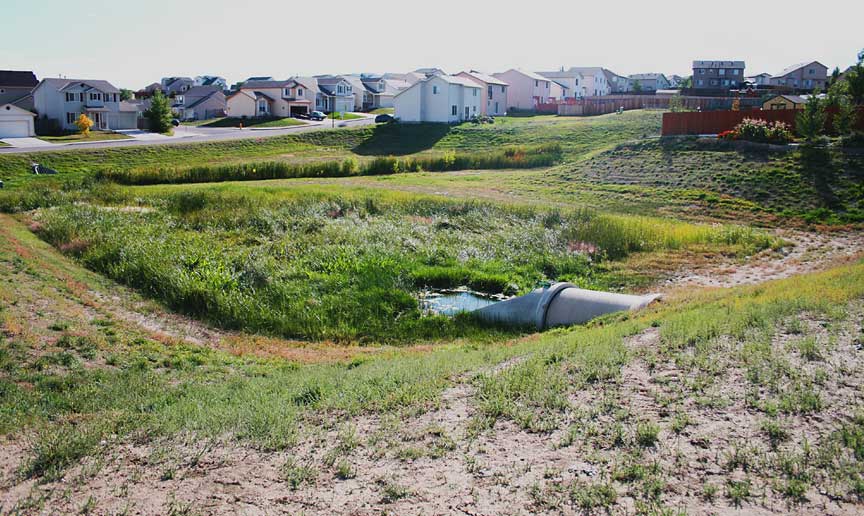
www.pikespeakfreepress.com
This detention pond also provides usable open space in a housing subdivision. Here the soil stays wet since a small amount of water is retained in the pond to support the lush growth. Some water quality improvement occurs in this situation. This could be planned by slightly raising the outlet drain above the basin bottom or it could be the result of a high winter water table or low soil permeability.
Outlet Structures
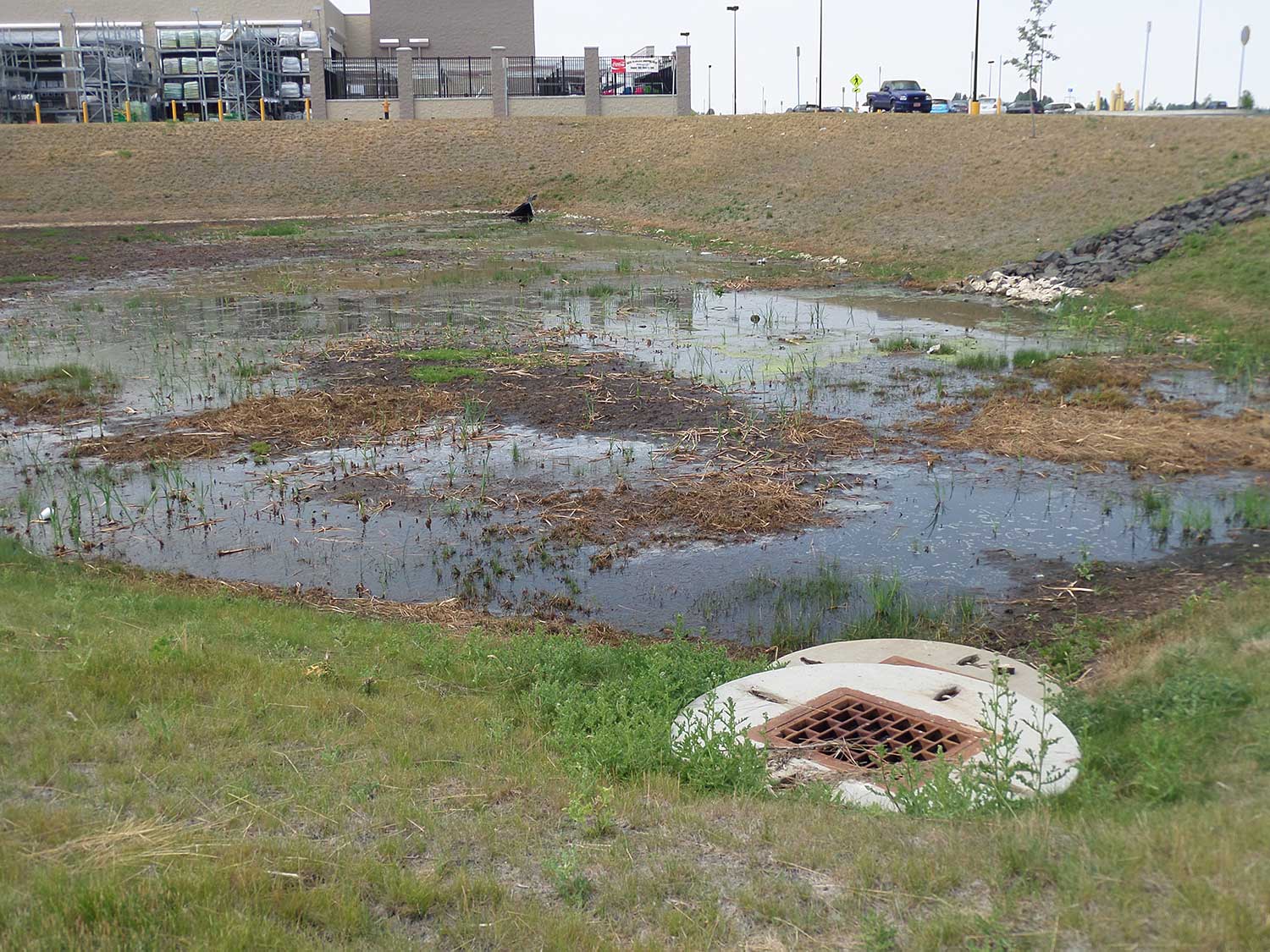
Big box, big detention. Austin, 2013
Most detention basins have multi-stage outlets. These calculations and the resulting detailing of the outlet structures for detention basins of this type are beyond the scope of this course. However, the image above and those below illustrate the concept of multi-stage outlets. In the image above you can see a newly constructed detention basin at a new Walmart super-center. It is only one of the basins needed to control the runoff from the acres of parking and impervious roof surfaces common to big box retailers with auto-oriented marketing strategies. Enlarge the image and notice that there is an inlet from the building in the distance and a parking lot spillway on the right. The outlet structure is in the foreground. There is vegetation beginning to grow but this an unintended product of poorly draining native soil (silt loam). Nevertheless, the vegetation and habitat created will improve the appearance and wildlife value of the basin. This borrow pit of a landscape is in the wrong place to support recreation, even a walking path would receive little use since it is isolate from residences by parking lots and other auto-oriented commercial uses.
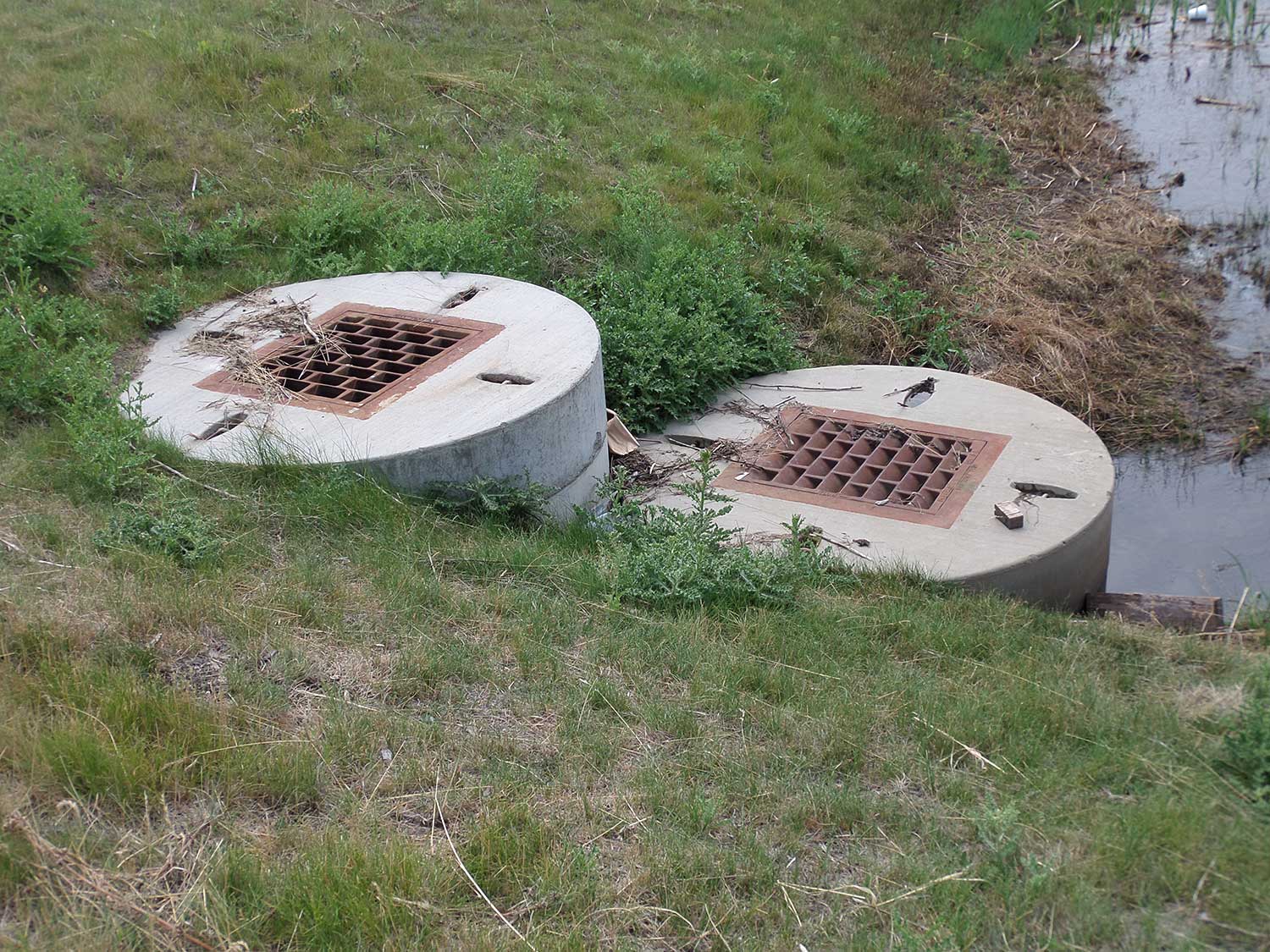
Thee stage pond outlet.
The grates in the top of these concrete vaults are the storm inlets for different design storms. The one at the higher elevation might respond storms greater than the 25-year flood while the lower one receives water exceeding the 10-year storm. Notice that the embankment is much higher than the outlet grates to detain an enormous amount of water temporarily.
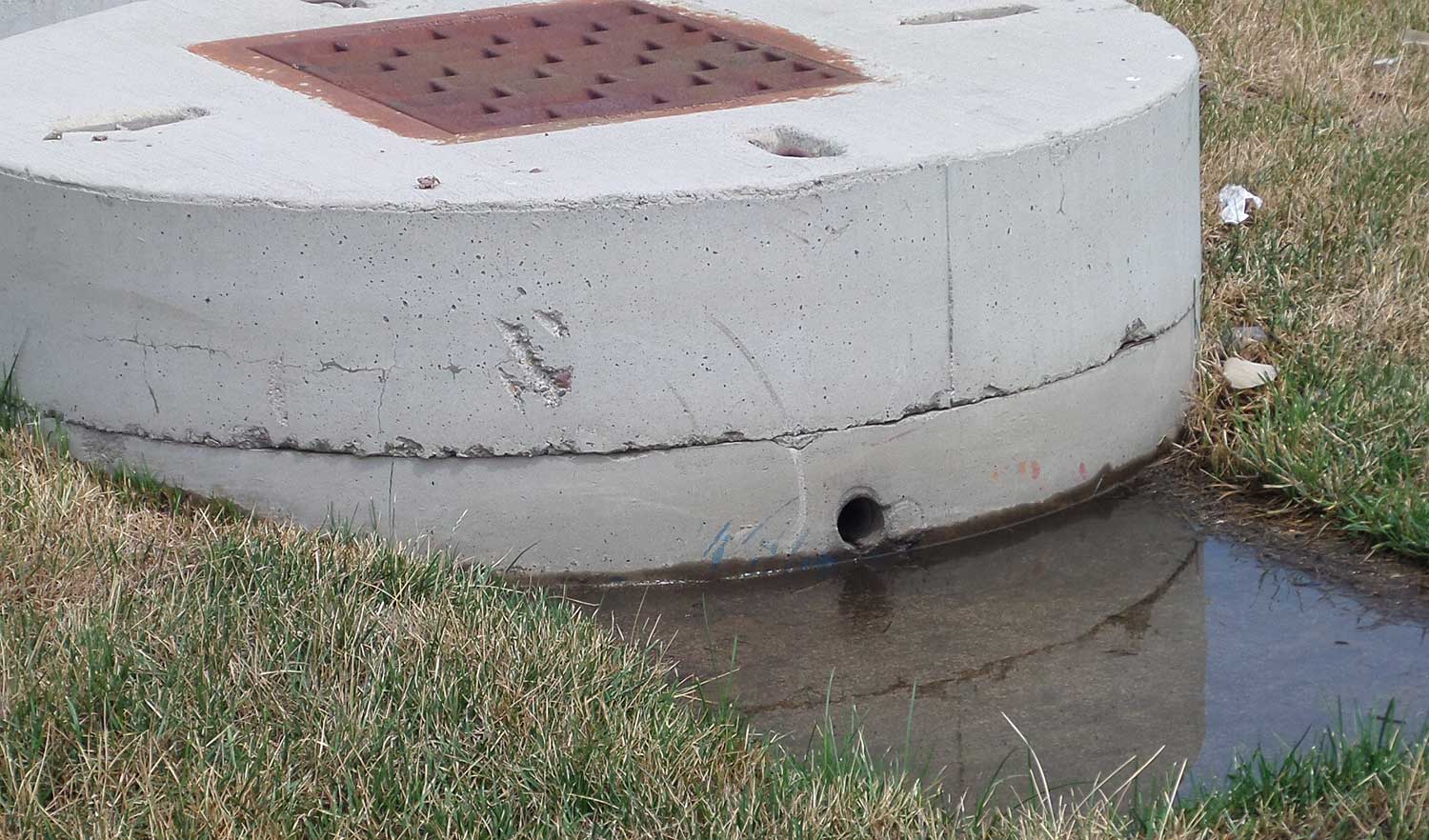
Pre-development outlet
The four-inch orifice at the base of this outlet structure releases the 10-year storm at the pre-development rate. You can see that the basin is designed to completely drain between storms. The multi-stage outlet increases the rate of outflow as each design storm is exceeded.
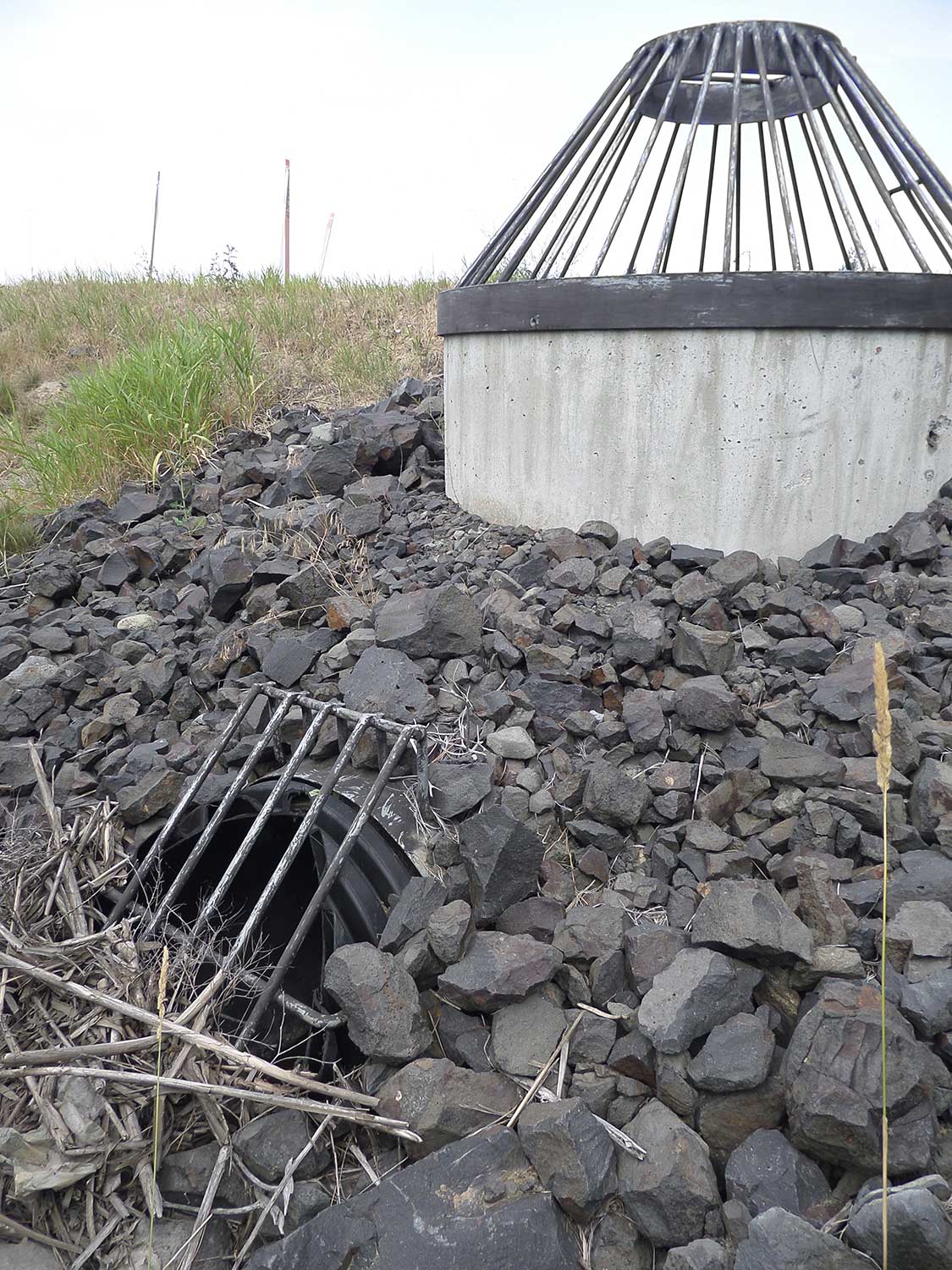
Outlet structure with trash rack
The image above shows another basin outlet structure. The foreground pipe delivers the pre-development outflow while the concrete pipe drains the bigger storms. Both outlets are covered with trash racks to limit clogging of the openings.
Advantages and Disadvantages

Outlet structure with trash rack
The advantages of detention basins as stormwater management devices are that they are simple to design and maintain and require less space than some other solutions. They do effectively reduce peak rate and volume to pre-development rates when located and designed properly. Their disadvantages are that they are solutions to a single problem instead of multiple problems. For example, they address flow issues but ignore all others, including water quality, wildlife, recreation, and aesthetics. In fact, they cause problems in these areas.
Study Questions
Define the primary purpose of the detention pond.
Describe maintenance and safety issues associated with detention ponds.
Why is the detention basin also called a dry pond?
What is the purpose of a multi-stage outlet?
List one advantage of detention basins as a stormwater management solution.
List two disadvantages of detention basins as a stormwater management solution.